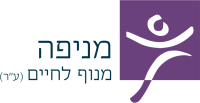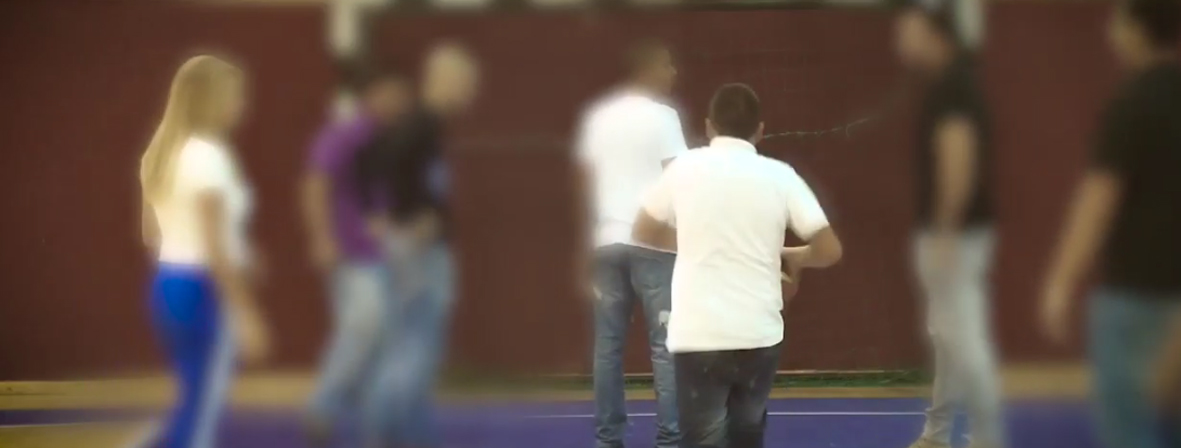According to the official data of the Ministry of Education, every year around 40,000 adolescents drop out of school settings. In addition, there is a hidden student attrition three times greater than that reported attrition.
Dropping out may be the result of a combination of a variety of problems: dangerous situations, trauma, injury, learning difficulties, and environmental or family challenges. Menifa, as a holistic program, provides an educational-social-therapeutic container for young people who have dropped out or are at risk of dropping out. Menifa enables them to develop their talents, encourages their personal excellence, and offers them opportunities and tools to exit the cycle of dropping out and risky behavior.
Objectives:
- Preventing dropping out by providing educational, social and emotional support
- Integrating dropout and at-risk youth within the community in normative settings
- Training of teachers in pedagogy that includes therapeutic and emotion-based tools
- Educational reinforcement to reduce gaps
- Creating a holistic container that integrates the student with parents and community
- Creating a holistic container that integrates life skills, therapy and education
Description of the Program:
- Menifa Classrooms provide an intensive educational container that is suited to the particular community culture.
- The program operates in full cooperation and collaboration with government offices and local authorities.
The program operates in two tracks:
- “Kitat Menifa” / “Menifa Classroom” — The classroom is located within the school, but is operated by Menifa’s professional staff, and as such, gives a unique response within a normative framework.
- “Kitot Kalat” / “Absorption Classroom” — This track is designated for youth who have been disconnected from school for a long time. The classrooms are located outside the school and provide the youth a protective environment which enables them to develop gradually and return to normative society.
Example of the results of Menifa Classrooms:
Dana came to Menifa after being expelled from three different high schools. Every time the same story repeated itself: Teachers she didn’t get along with, punishments imposed on her, and ultimately, they told her that she just wasn’t suited to the system. Dana arrived at Menifa by chance. A friend she met in Kikar Zion told her about the place. “When I got to Menifa Classroom, I felt like I found a family. My ‘life teacher’ never gave up on me, and knew, on the one hand, how to set boundaries for me, and on the other hand, how to embrace me all the time.” Dana graduated high school and today is serving in the army.
Case Study: Eretz Hazvi High School in Gilo
In the 2018-19 academic year, Menifa founded a day center located at the Eretz Hazvi High School in the Gilo neighborhood of Jerusalem. The center is designed for youth from religious families from Jerusalem and surrounding settlements who have been expelled from the education system for a variety of reasons.
Goals of the Center:
- Incorporating the youth into an educational setting tailored to the needs of the group and the needs of each individual.
- Providing an educational response that includes filling gaps and studies toward high school graduation or professional certification.
- Learning and experimenting in diverse subjects to develop areas of interest and experience success.
- Developing social and group skills and a sense of personal responsibility for the group and the environment.
- Enhancing the self-esteem, confidence and empowerment of every student to enable optimal integration into adult life.
Secondary Goals of the Center
- To serve as a home and structure for adolescents who have overtly dropped out or are at an elevated risk of dropping out, through educational, emotional, social and cultural reinforcement.
- Helping youth learn to behave within a framework while accepting and internalizing norms and rules.
- Developing the ability to specify goals and carry out self-control and reflection processes.
- Assisting youth to prepare for the graduation exams, as training in study, time- and stress-management, and other important learning skills.
- Bridging between the disconnected youth and the community, and map out a process of restoring the youth as a functioning member of the community.
- Training the teaching staff in tailoring their teaching to dropout youth.
Description of the Program:
- The program started with 10 students, and the goal is to reach 15-20 students in a supportive, three-class framework.
Operating Team:
- Program director and a professional facilitator responsible for the administrative and pedagogical aspects of the center’s activities; Responsible for running the program, coordinating the student admissions process, and maintaining a continuous process of initiating, guiding and supporting the center’s staff.
- A “mol” (“life teacher”) who regularly accompanies the teens during school hours, after school hours, and social work outings. The life teacher works collaboratively with parents, holds weekly one-on-one conversations with all students, conducts life skills classes, conducts “open table” activities, accompanies the boys in all their activities at the center, and builds personal work plans for students.
- A teaching staff for academic subjects, which works with students on developing study skills and learning strategies, produces differential learning materials and monitors each child’s academic progress.
Programs:
- Daily study of academic subjects
- Vocational program with Top-Edu College
- Wilderness workshop
- Weekly “opening the week” group meeting
- Weekly therapeutic-emotional group conversation
- Weekly one-on-one conversations with educators
- Mediation
- Home visits (twice a year for each student)
- After-school social activity
- Community service activity
- Close support by Menifa: Program management, guidance and training for the operating team



